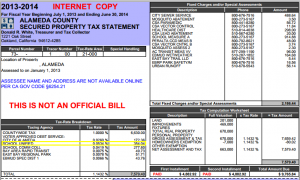So now, Alameda Unified School District officials have taken to referring to a “Measure I Implementation Plan,” except, there is no such plan.
As covered previously, the implementation plan that Measure I proponents talk about is a presentation that the school board reviewed in June, 2014, but it is not part of the Measure I ballot measure language, and in no way binds school district officials as to how they spend any bond proceeds.
Read the Measure I ballot measure – there is no talk about an implementation plan.
The latest hocus-pocus from school district officials comes in an agenda item for a solar panel master an upcoming school board meeting.
If you have read the ballot measure, you’ll note that it talks about using Measure I bond proceeds to pay for solar panels. But the school district has no detailed spending plan for this!
That’s the whole point of the solar panel agenda item at the upcoming board meeting – to try to figure out what kind of solar plan the district might be able to afford and implement. According to the agenda item, AUSD staff “requests time to create a more comprehensive energy program and return at a later board meeting for review and adoption.”
And even if they do this, there is nothing binding in Measure I that commits them to spending money in accordance with the program.
“Give me your money now, we’ll figure out how we want to spend it later!” – that’s what the school district is telling Alameda voters.
Voters shouldn’t stand for it – Vote No on Measure I

